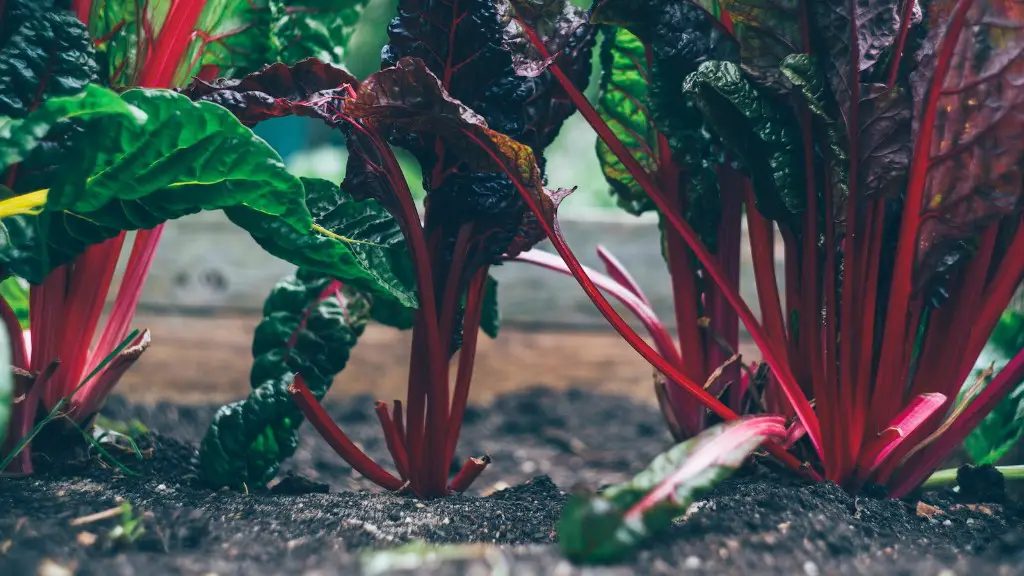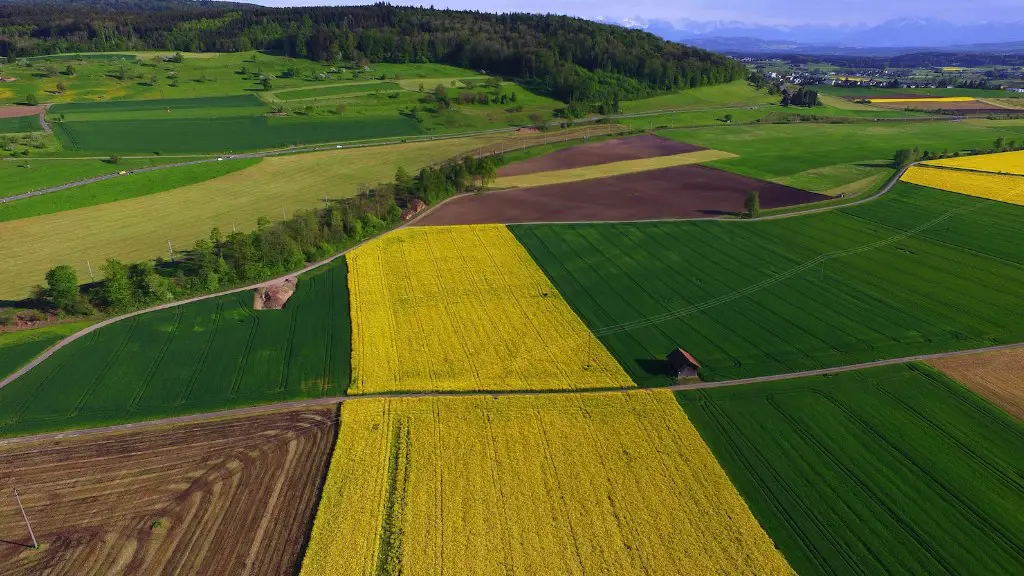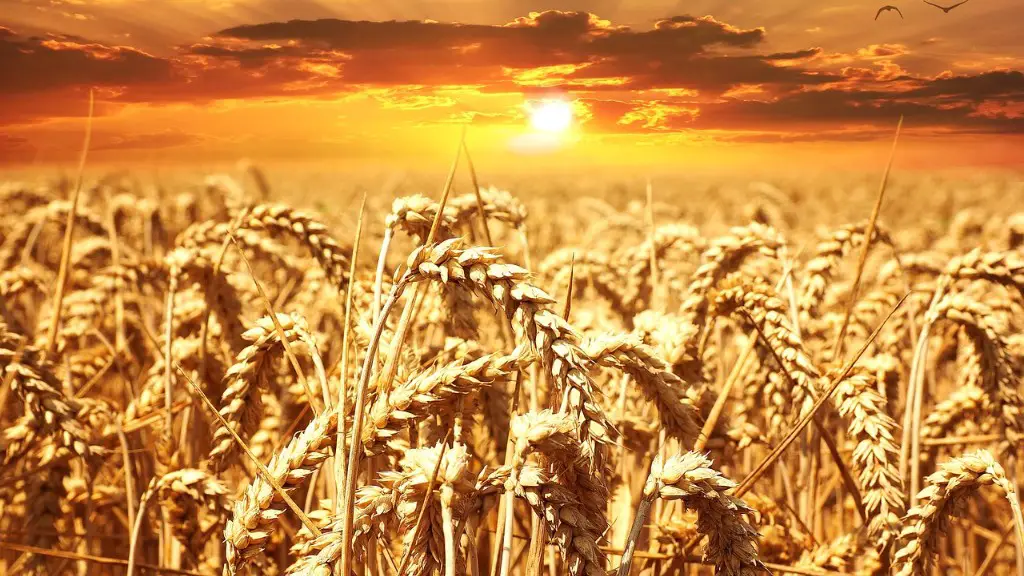Agriculture has a direct link with geography, as human beings rely on the environment for the resources required to sustain agricultural activities. Climate, soil, hydrology, land features, and market access are just a few of the geography-related elements that are essential for the production of food. Many areas of the world are able to produce the type of crops that are best suited to their local climates and soils, but farming practices can be linked to the geography of a region in a number of ways.
Climate is an important factor when it comes to the suitability of land for different types of agriculture. Rainfall, sun exposure, temperature, and humidity all are integral to the growth and development of crops. Producers in tropical areas, like the lowland valleys in South America, are able to grow rice, which is a very labor-intensive crop. Such rice-growing areas rely on the consistent warm temperatures and plenty of moisture for the rice to survive and thrive. Farmers in the United States Midwest, on the other hand, often grow much more drought-tolerant crops like corn and soybeans because of the dry conditions. Additionally, precipitation can play a role in the success of certain types of livestock production.
The topographical features of a region often play a major role in the type of agriculture that is used. For example, the valley of the Nile River in Egypt is conducive to the growth of annual crops due to its flat terrain. Mountainous areas with steep slopes are not easily used for the intensive agricultural production, but smaller scale operations of raising sheep and goats can thrive in such harsh environments.
Soil quality is extremely important in agriculture. The composition of soils—for example, sand, silt, clay, or loam—will determine the types of crops that can be successfully grown in the area. In some areas, the severe erosion of soil can lead to reduced fertility over time. Producers need to work with the soil characteristics and employ techniques to maintain fertility, such as rotating crops between seasons and adding organic matter to improve the soil.
Proximity to markets is an integral part of successful agricultural production. This had a particularly strong connection to the geography of a region in large-scale production before the times of modern transportation. In earlier times, farmers produced goods that had limited viability if they had to travel long distances. Therefore, larger farms with access to larger markets were more profitable than those that were too far away from markets. Transporting goods today has become much easier and faster, allowing producers to send goods around the world.
Ultimately, geography is essential to the success of agricultural production. Factors like climate, land features, soil quality, and market access all must be taken into consideration when assessing the suitability of land for various types of agricultural activities. The geographic conditions of a region are integral to the ability of humans to use the land sustainably, and play a major role in determining the viability of different farming systems.
Role of Climate in Agriculture
Climate is an important factor in the success of agricultural production. Conditions such as temperature, sun exposure, rainfall, and humidity all affect the productivity of crops and livestock. In tropical and subtropical climates, rice, sugar cane, and other labor-intensive crops are typically grown due to conditions that are conducive to such crops. In drier climates, crops like corn and soybeans, which are more drought-tolerant, dominate agricultural production. Livestock production, on the other hand, often relies on adequate moisture for feed production, and poor conditions can lead to a decrease in production.
The climates of a region can also be linked to long-term changes in the agricultural landscape. Changes in climate such as increasing temperatures or decreases in the amount of rainfall can lead to changes in land use and agricultural practice. For example, regions that are becoming drier may switch from cultivated crops to animal production. On the other hand, warmer temperatures can also lead to an increase in the amount of water available for production in water-scarce areas.
Climate can also have an effect on the amount of time it takes for crops to mature. In many parts of the world, climate change is leading to warmer temperatures, which can shorten the growing season for certain crops. This can be a double-edged sword, leading to higher yields from the same parcel of land, but also to higher prices for those crops.
Agriculture is an inherently unpredictable business, and having an accurate understanding of the climate is an integral part of running a successful operation. Producers need to assess the current climate of their local areas and be aware of long-term changes that may affect their operations. This can help them make decisions that will ensure their production is as successful and profitable as possible.
Role of Land Features in Agriculture
Land features are an integral element of the relationships between agriculture and geography. Factors like the topography, soil quality, and access to water all influence the types of crops and animals that can be raised in a particular area. Much of the world’s agricultural land is comprised of flat areas like valleys, plains, and floodplains, which are well suited to intensive production. Hills and mountains, on the other hand, often lend themselves to smaller-scale production. Additionally, water is essential for many farming operations and areas with limited access to water often face challenges when it comes to production.
The shape of the land features can also be an important factor. In many parts of the world, farmers are able to control the flow of water on their fields with the use of irrigation canals, ditches, and ponds. Producers in regions where rainfall is inconsistent or insufficient rely on these types of systems to provide water to their crops and livestock. In areas with steep slopes, terraces are often used to help manage water flow and allow producers to maximize their use of land.
In addition to topography, land features can also have an effect on the type of soil available for production. The composition of soils—for example, sandy, loamy, or clay-based—determine the type of crops that can be grown in the area. Additionally, severe erosion of soils can lead to reduced fertility over time, making it difficult to produce high yields. Farmers must be aware of the land features of the area and employ techniques to maintain soil fertility in order to maximize production.
Ultimately, land features play a major role in the ability of producers to produce crops and raise livestock. Producers must assess their local land features to ensure they are able to feasibly produce their desired crops and/or animals. Additionally, they need to employ strategies to ensure they are able to maintain soil fertility, manage water flow, and provide a suitable environment for their current and future production plans.
Role of Market Access in Agriculture
The role of geography in agriculture does not stop at the farm gate. Producers must have access to markets in order for their production to be profitable. In earlier times, farmers would often produce goods that had limited viability if they had to travel far distances. Therefore, larger farms with access to larger markets were more profitable than smaller farms that lacked such links. In some cases, small-scale producers would band together, forming cooperatives in order to better access distant markets.
In today’s world, thanks to improved transportation and communication technologies, it is easier to transport goods between distant locations. Producers are now able to send goods around the world in a timely and cost-effective manner. Additionally, the internet has provided modern farmers with the ability to directly market their products to consumers, eliminating the need for large-scale market access. This has opened up new opportunities for small-scale producers who formerly lacked access to distant markets.
Each region has unique geographic factors that influence the ability of producers to access markets. For instance, producers located in rural areas are often at a disadvantage when it comes to transporting goods. This can put remote producers at a disadvantage relative to producers in more urban areas with better access to transportation links. Additionally, regions that lack access to the internet may face similar challenges when it comes to direct-to-consumer marketing.
Market access plays an important role in the success of agricultural production. Producers must assess their local market access in order to ensure they can maximize their profits and make their operations sustainable. This includes evaluating transportation links, communication technologies, and other geographic factors that influence producers ability to access distant markets.
Role of Hydrology in Agriculture
Water is essential for many types of agricultural production and hydrology has a major effect on the viability of agricultural operations in certain regions. Rivers, creeks, and springfed streams are often used for irrigation, and areas with limited access to these water sources often face challenges. Additionally, floods can leave certain lands unusable for production for extended periods of time.
For producers in water-scarce areas, hydrology can play a major role in their success, and producers must understand the hydrology of their areas in order to maximize their use of water. Making efficient use of water is critical in many parts of the world, as water is a scarce resource. Farmers must be able to assess the amount of water they need, and they also must be aware of how to access it, store it, and efficiently deliver it to their crops and animals.
Water can also influence the types of crops produced in a region. For example, in desert regions, where water access is limited, producers are often able to grow crops that are highly drought-tolerant, like alfalfa and mesquite. On the other hand, in areas with more consistent access to water, such as the Nile River Valley, producers are able to grow annual crops like maize, millet, and sorghum.
Ultimately, hydrology plays an integral role in agricultural production. Producers in water-scarce areas must be aware of the resource and learn to use it efficiently. Additionally, producers need to be aware of how water influences the type of crops that can be grown in their area in order to make sure their production is as successful as possible.
Role of Technology in Agriculture
In today’s world, technology plays an ever-increasing role in agricultural production. Technologies such as GPS-enabled tractors, drones, and remote-sensing systems are being used by producers around the globe to make their operations more efficient. Producers are able to use these technologies to maximize their inputs and make precise decisions in order to maximize the yields of their crops and animals.
In many cases, technology can be used to directly influence the geography of a region. For instance, GPS-guided tractors are now able to precisely place inputs such as seed and fertilizer exactly where they are needed. This eliminates much of the inefficiency of previous farming practices, allowing producers to maximize their inputs and reduce their costs. Additionally, remote-sensing technology allows producers to get real-time data about their lands and crops, allowing them to make more precise decisions about their production.
Technology also allows producers to access distant markets in a more cost-effective manner. For instance, the internet has opened up opportunities for small-scale producers who previously had limited potential for market access. Producers can now easily communicate with potential buyers and market their products directly to consumers. Additionally, improved transportation links allow producers to send their products around the world in a much faster and cost-effective manner.
In the modern world, technology has had a major impact on the ability of producers to maximize yields and access distant markets. Producers must be aware of the technologies that are available and make sure they are able to use them to their advantage in order to make their operations profitable and sustainable.





